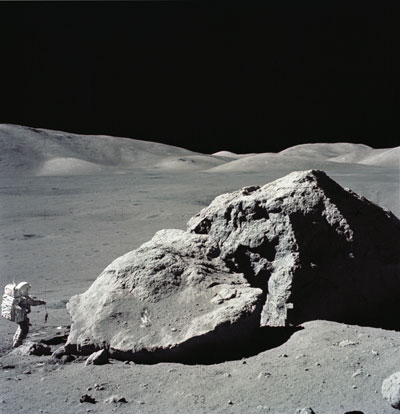Join us for conversations that inspire, recognize, and encourage innovation and best practices in the education profession.
Available on Apple Podcasts, Spotify, Google Podcasts, and more.

Moon landing.
During this session, you will have an opportunity to build understandings to help you:
Earth’s Moon has been a source of curiosity throughout human history. It is Earth’s closest companion in the Solar System, yet it appears to be very different from the Earth. There is a growing body of evidence, however, that tells us that there are also important similarities between the Earth and its Moon. In this session we “travel” to our nearest neighbor to collect clues that we can use to interpret the features of the Moon and story of the Moon’s origin.
The Moon’s motions in the night sky are so familiar to us that we may take the Moon for granted. But what can we learn from studying the Moon? What means can we use to investigate it? Both Soviet and American astronauts collected rocks from the Moon’s surface and returned them to Earth for study. What stories can these rocks can tell us about the Moon’s mysterious past and what can they reveal about the history of our home planet, Earth?
In the video our journey to the Moon begins with a first-person perspective from Dr. Harrison Schmitt, an Apollo astronaut and geologist, and the only scientist to have ever set foot on another world. Then Dr. R. Hank Donnelly, Dr. John Wood, and Dr. Myron Lecar assist us in considering the current theories and supporting evidence for the Moon’s origin. We end our journey by considering what the Moon can tell us about events early in Earth’s history.
Throughout the video, we observe elementary school children being interviewed as they explore their ideas about the Moon and its origin. We also visit Kathy Price and her fifth graders at Naaba Ani Elementary School in Bloomfield, New Mexico as they think about the sizes of the Earth and the Moon, and the distance between them. Finally, we observe as the students apply knowledge of the angular size of the Earth and Moon in constructing a scale model of the Earth-Moon system.